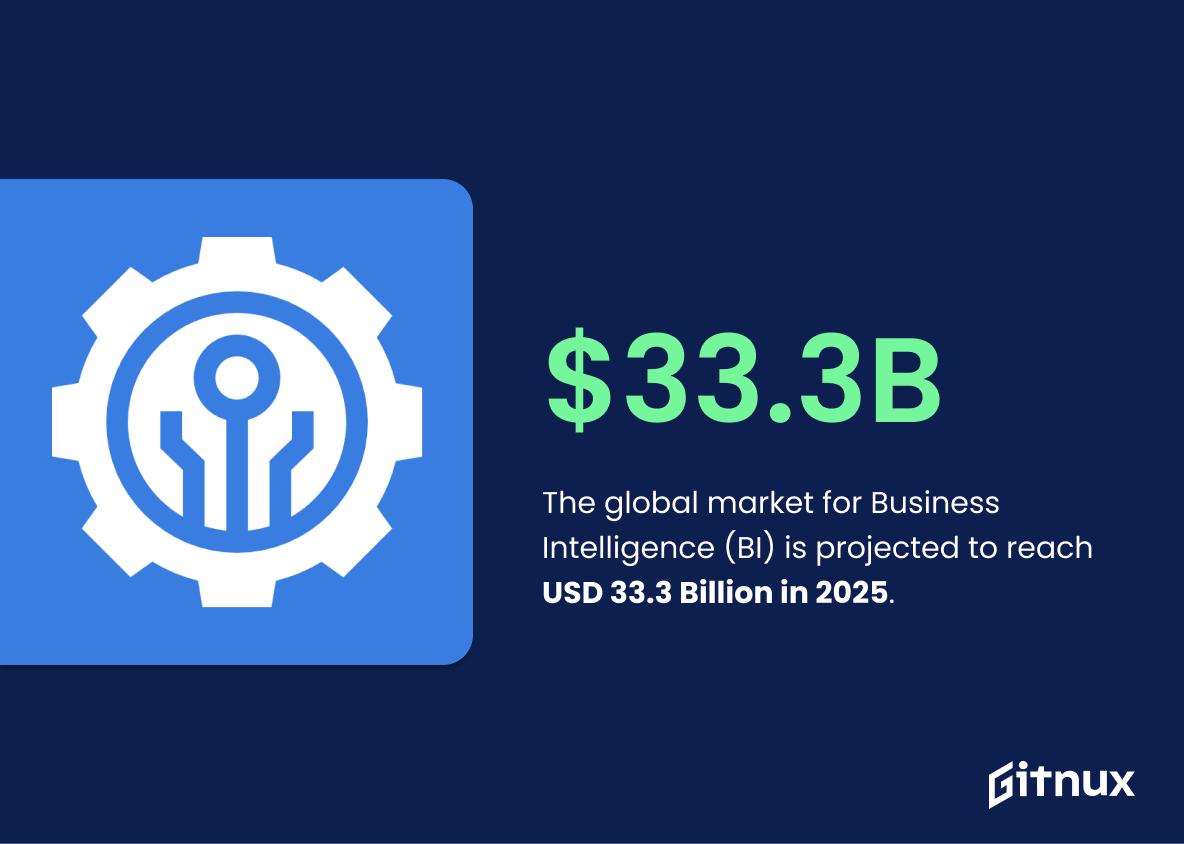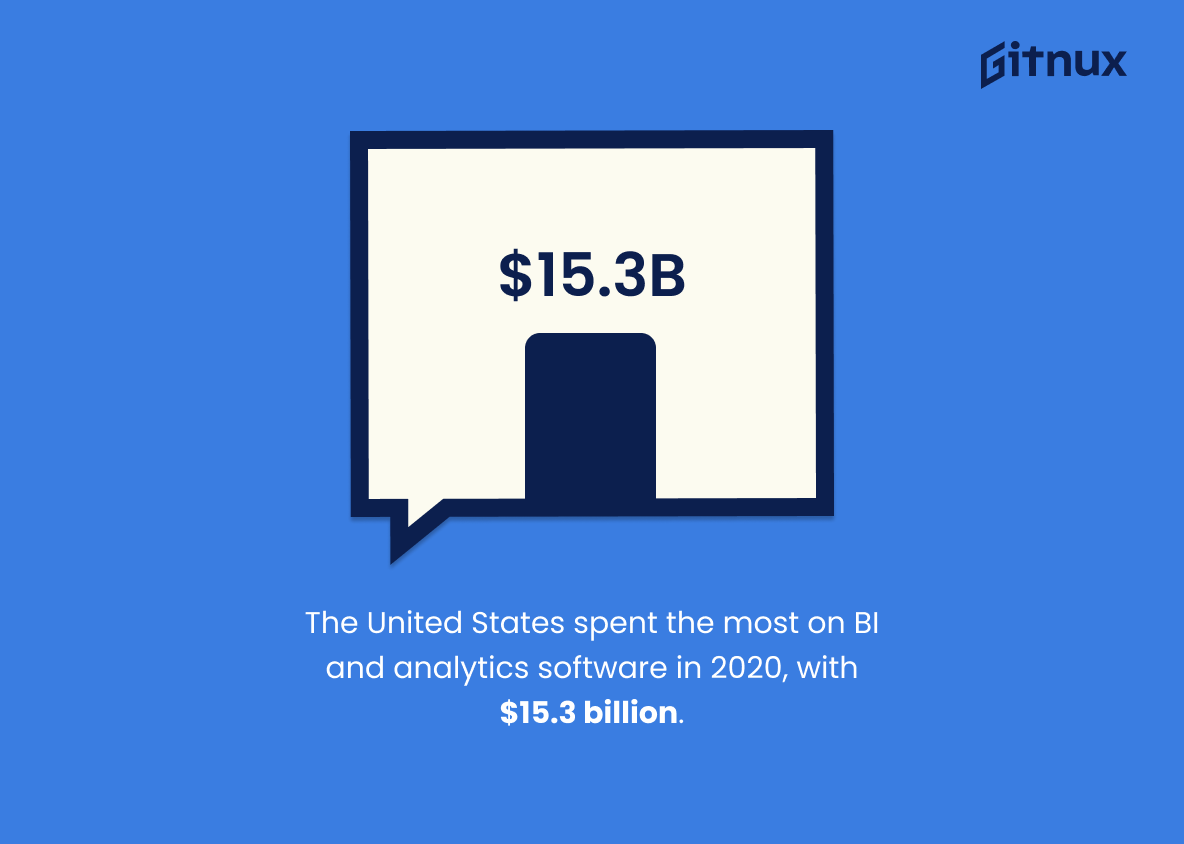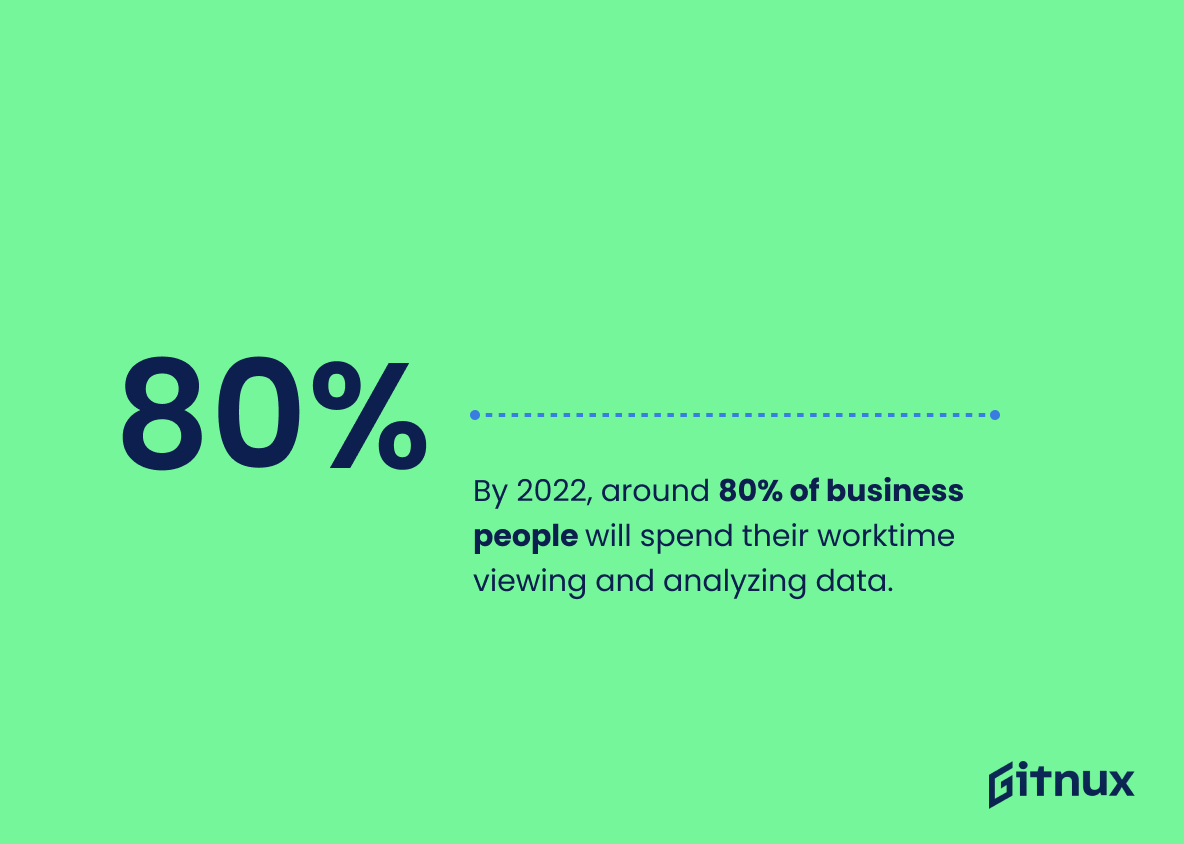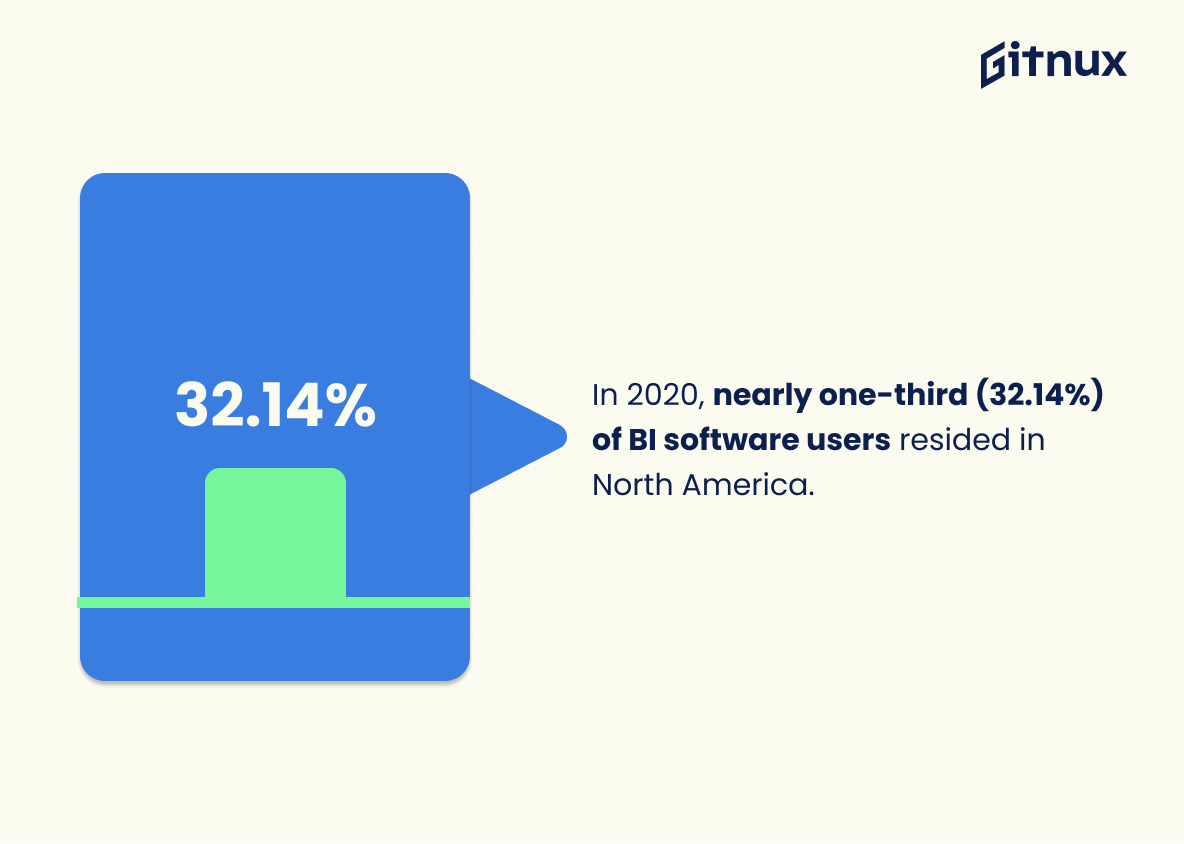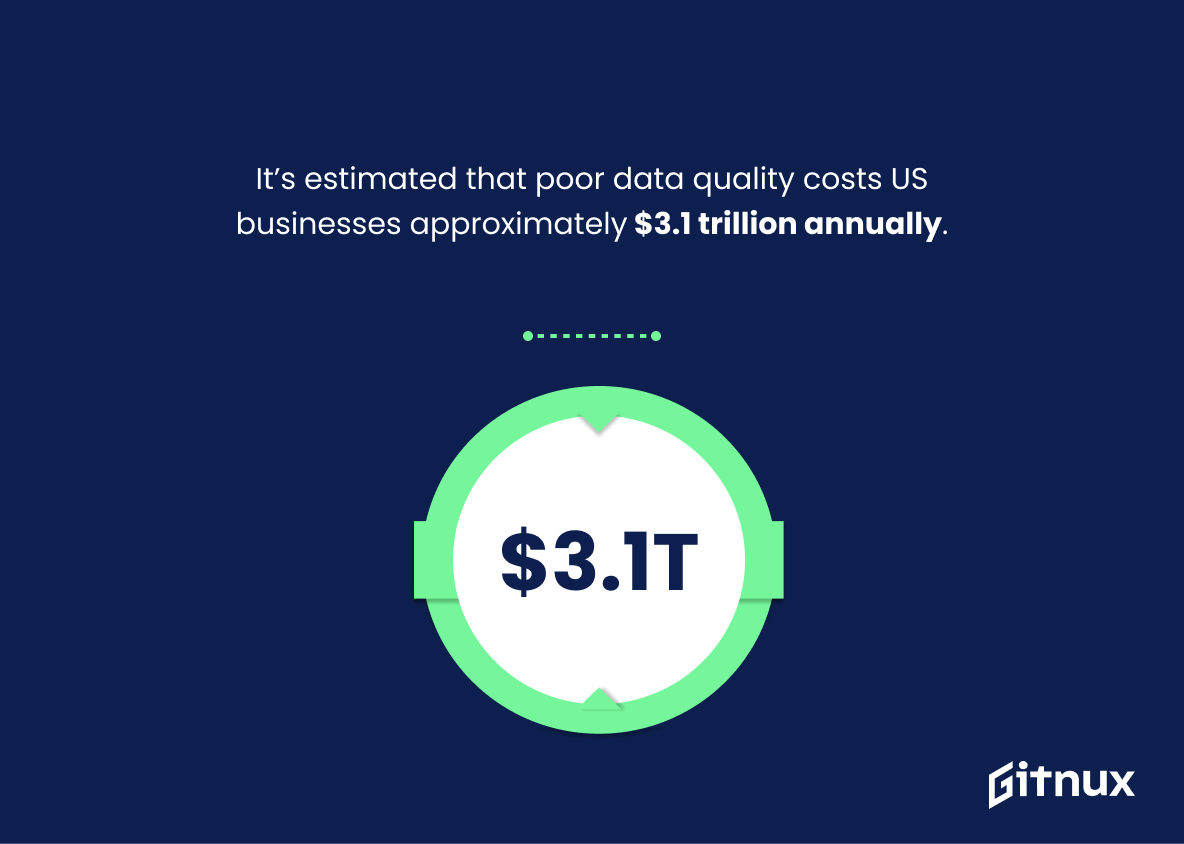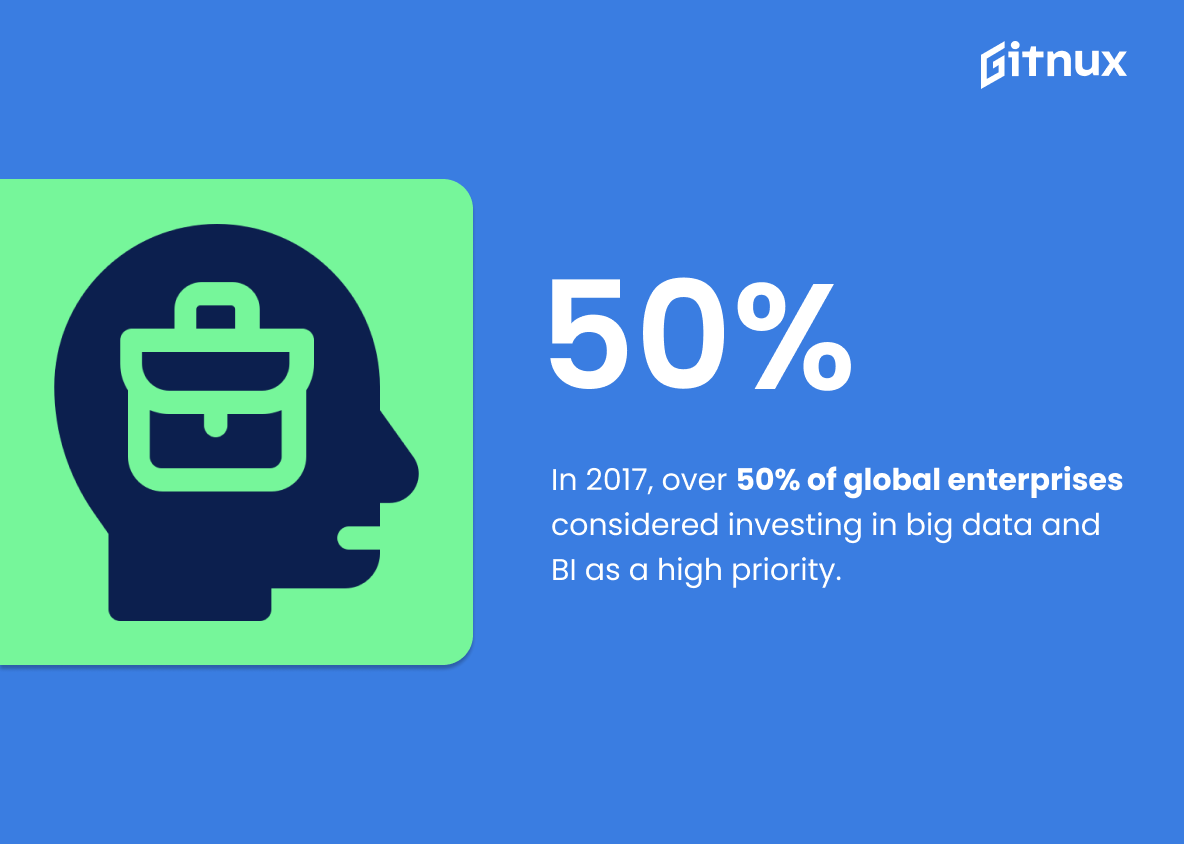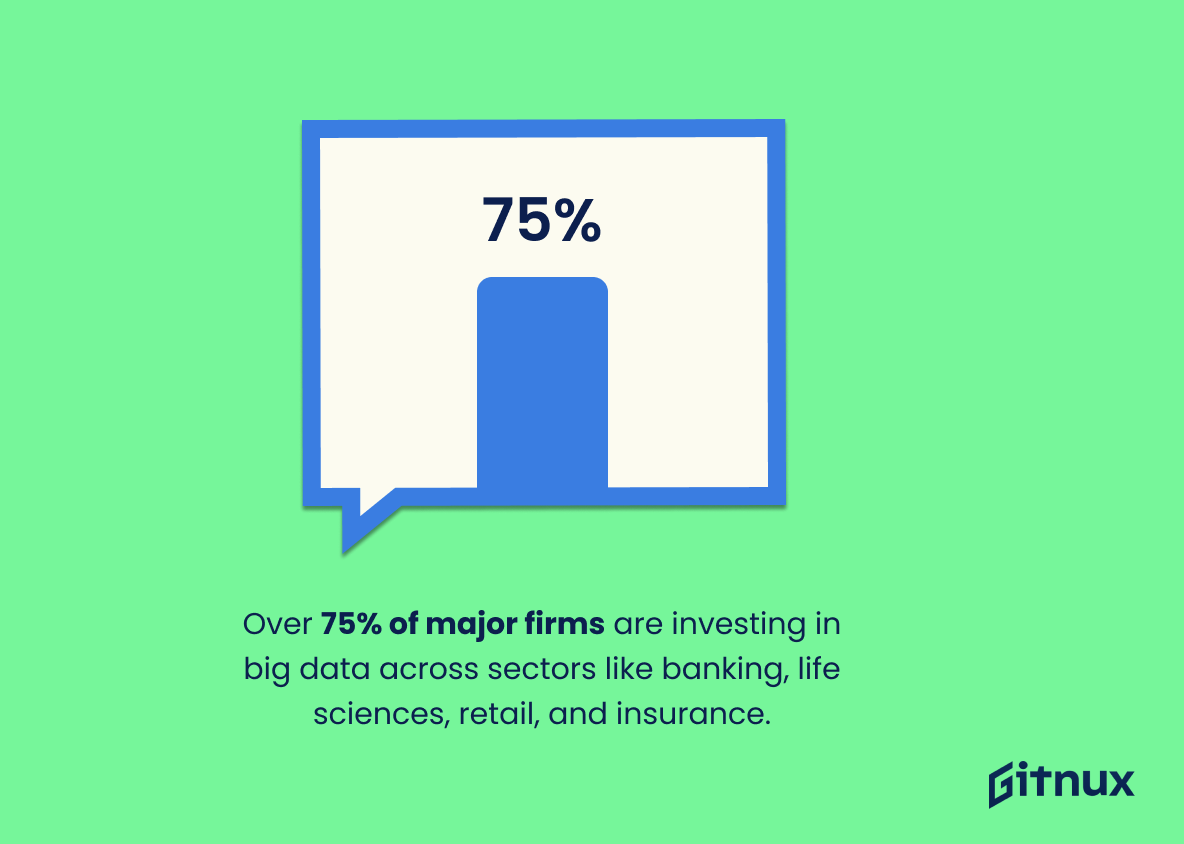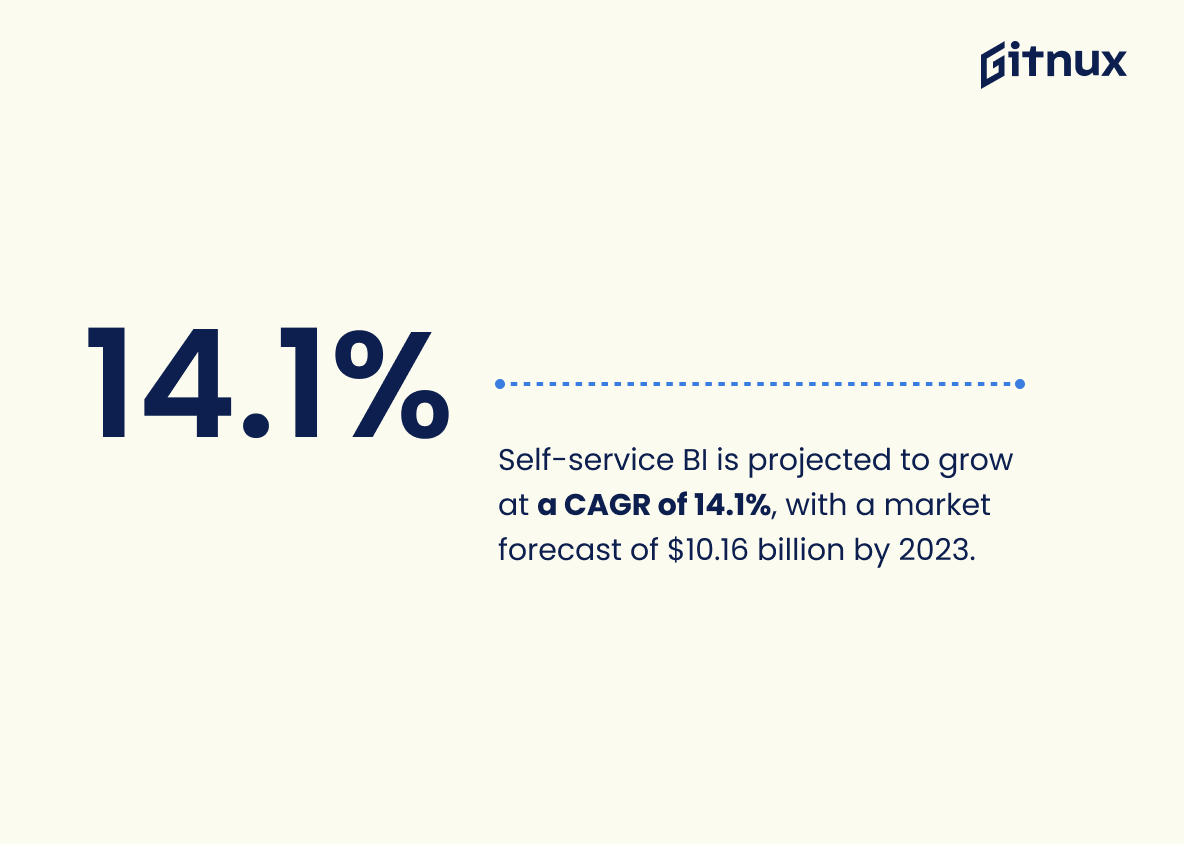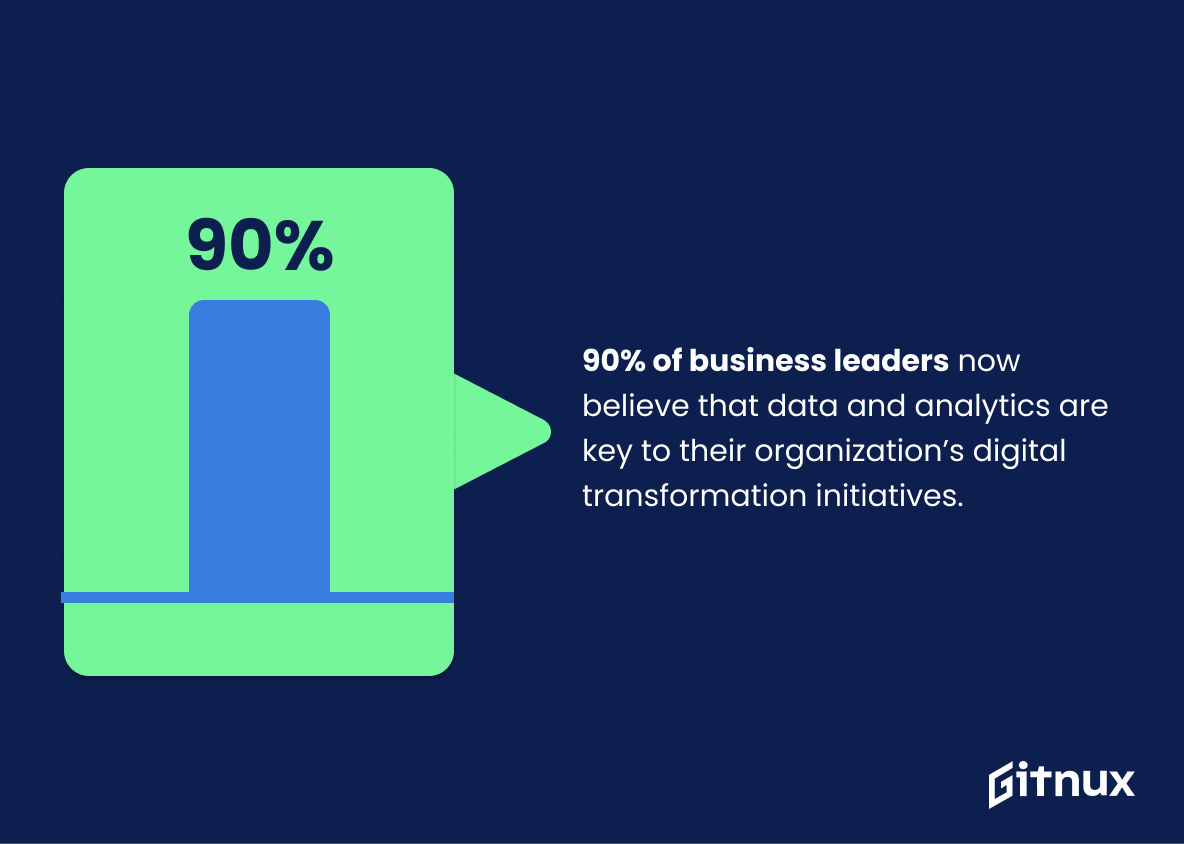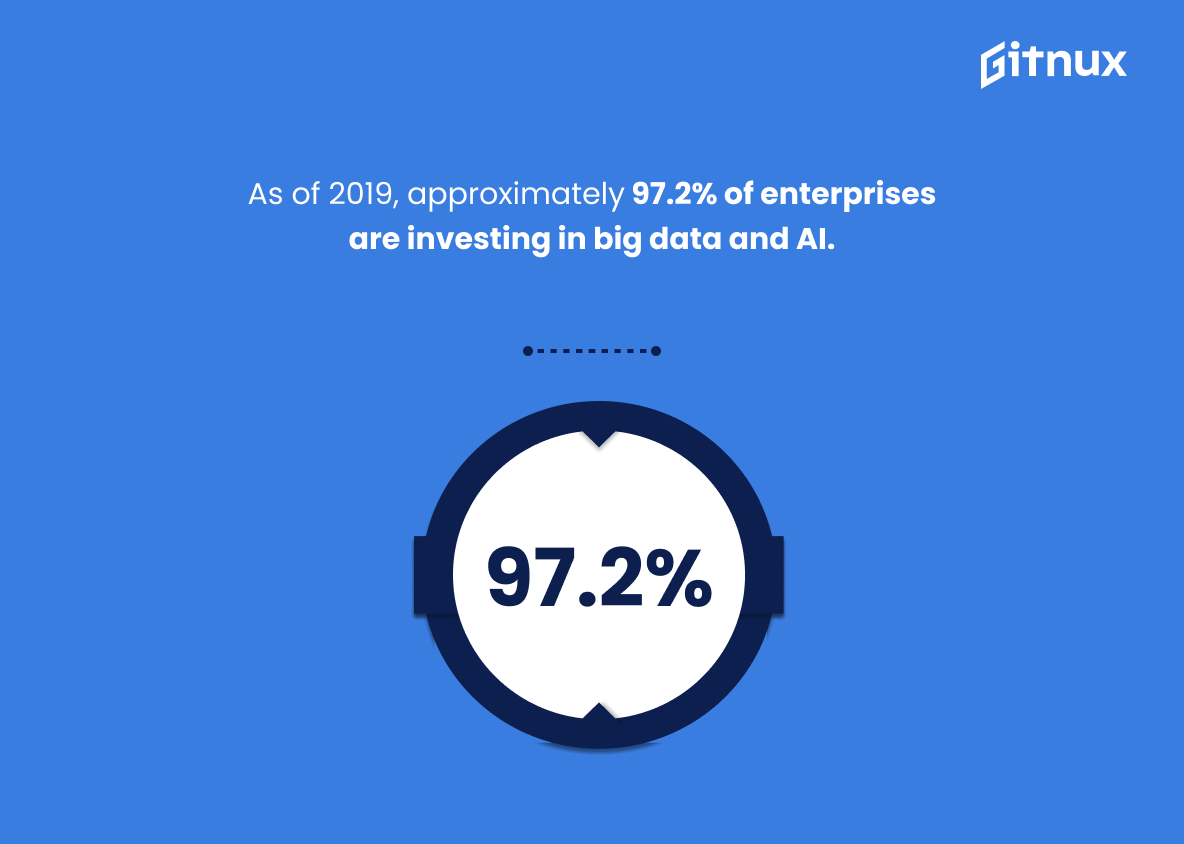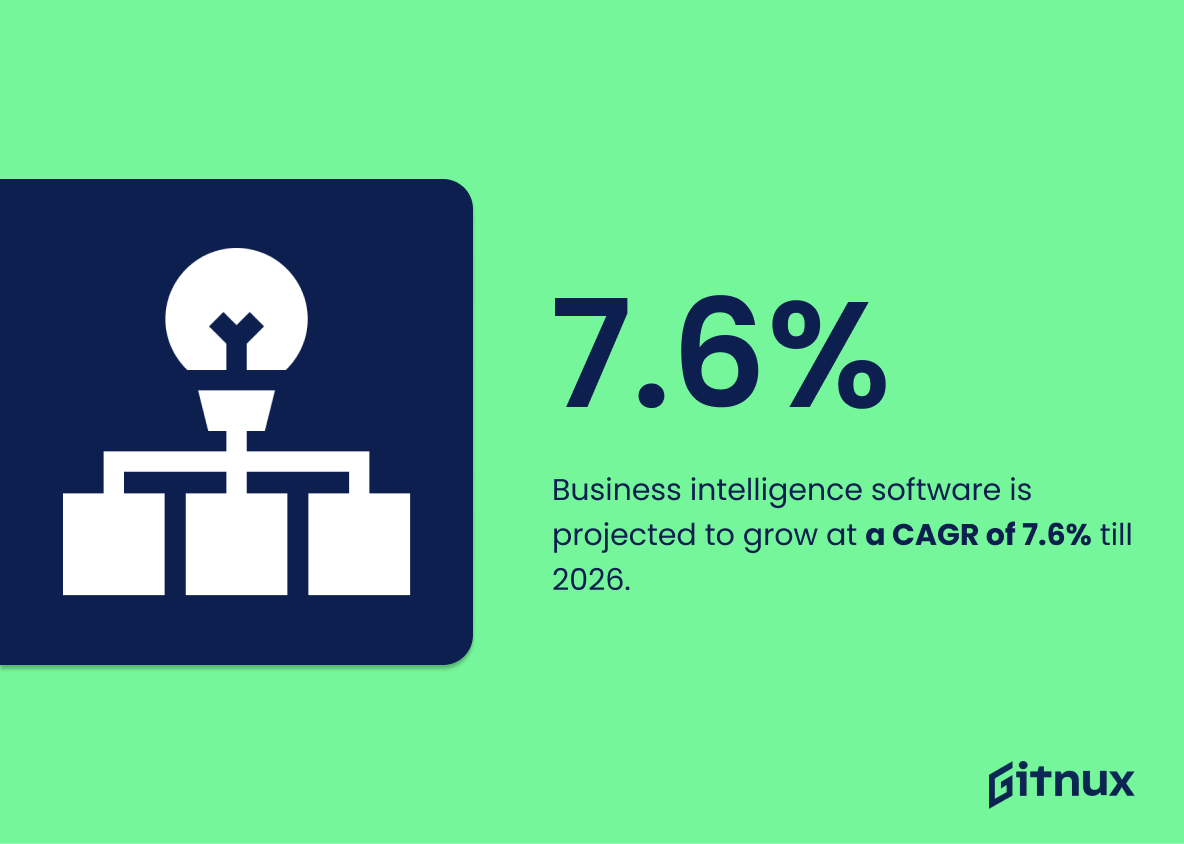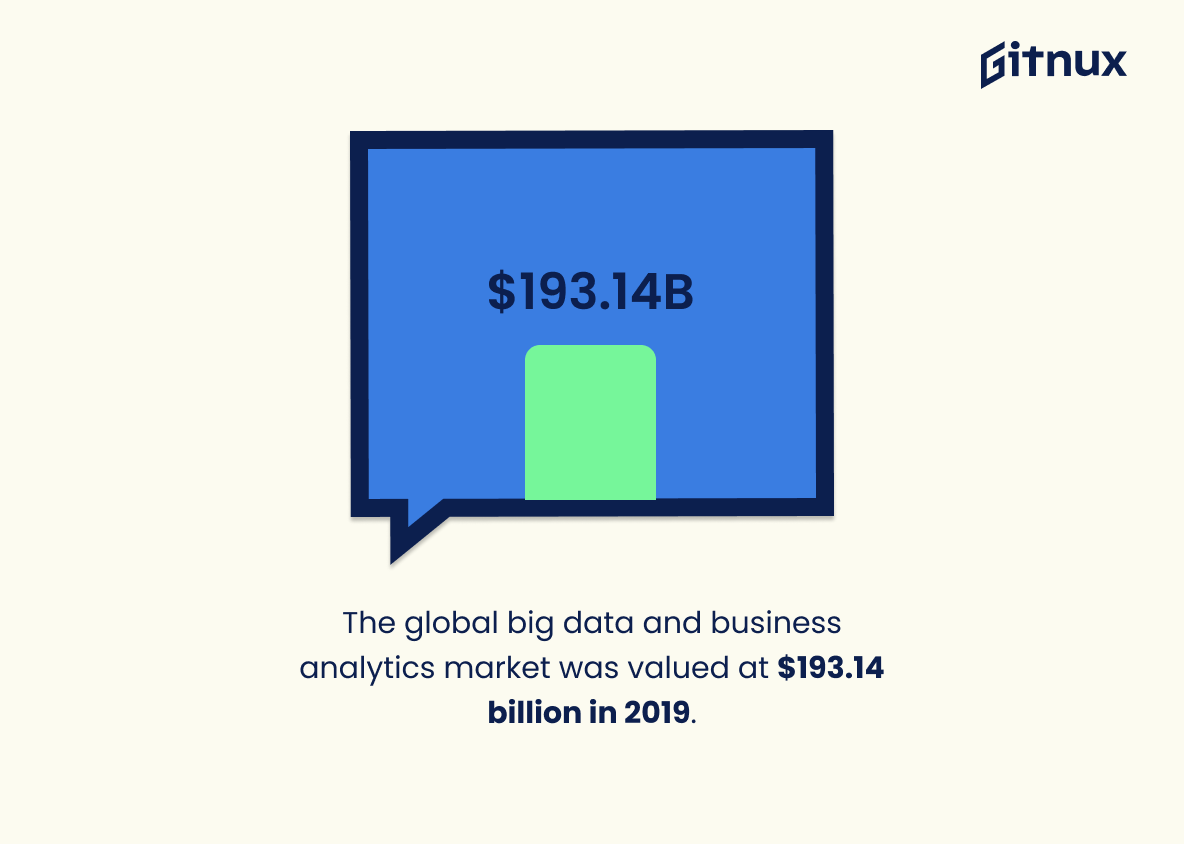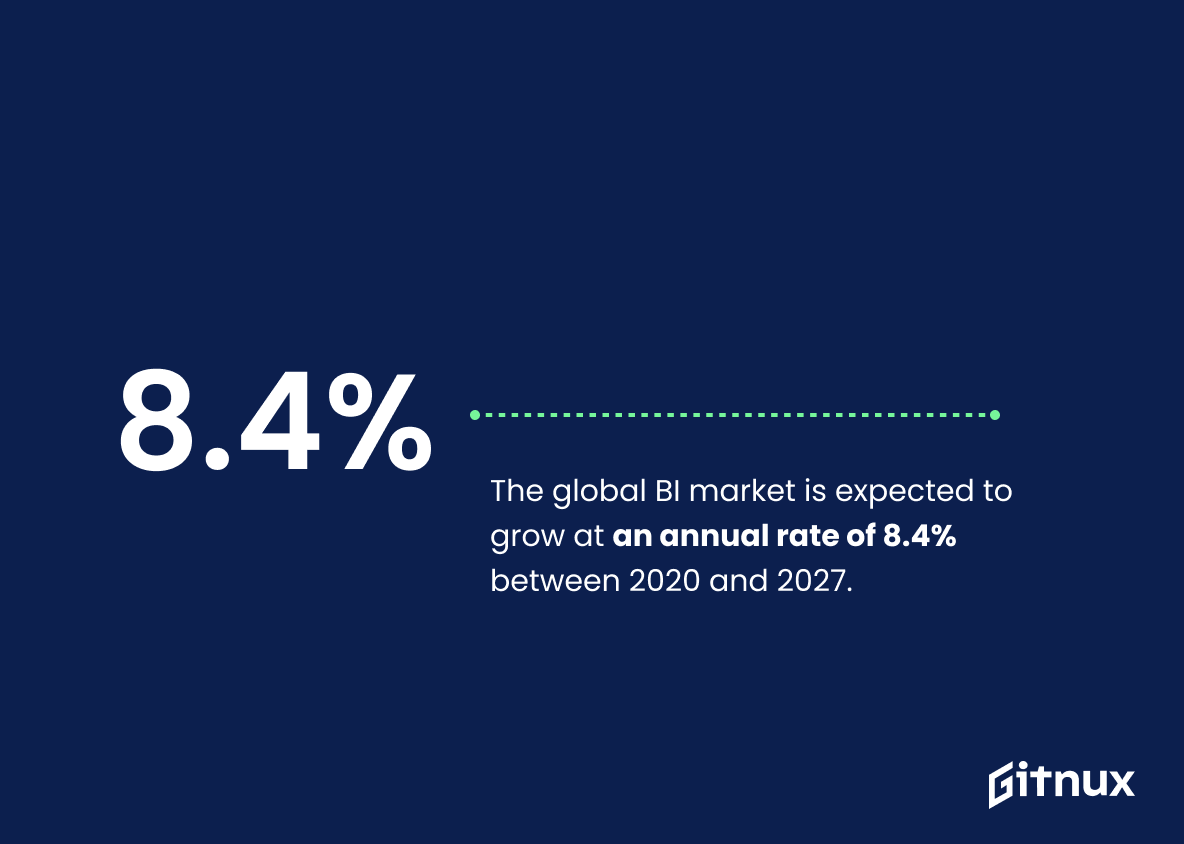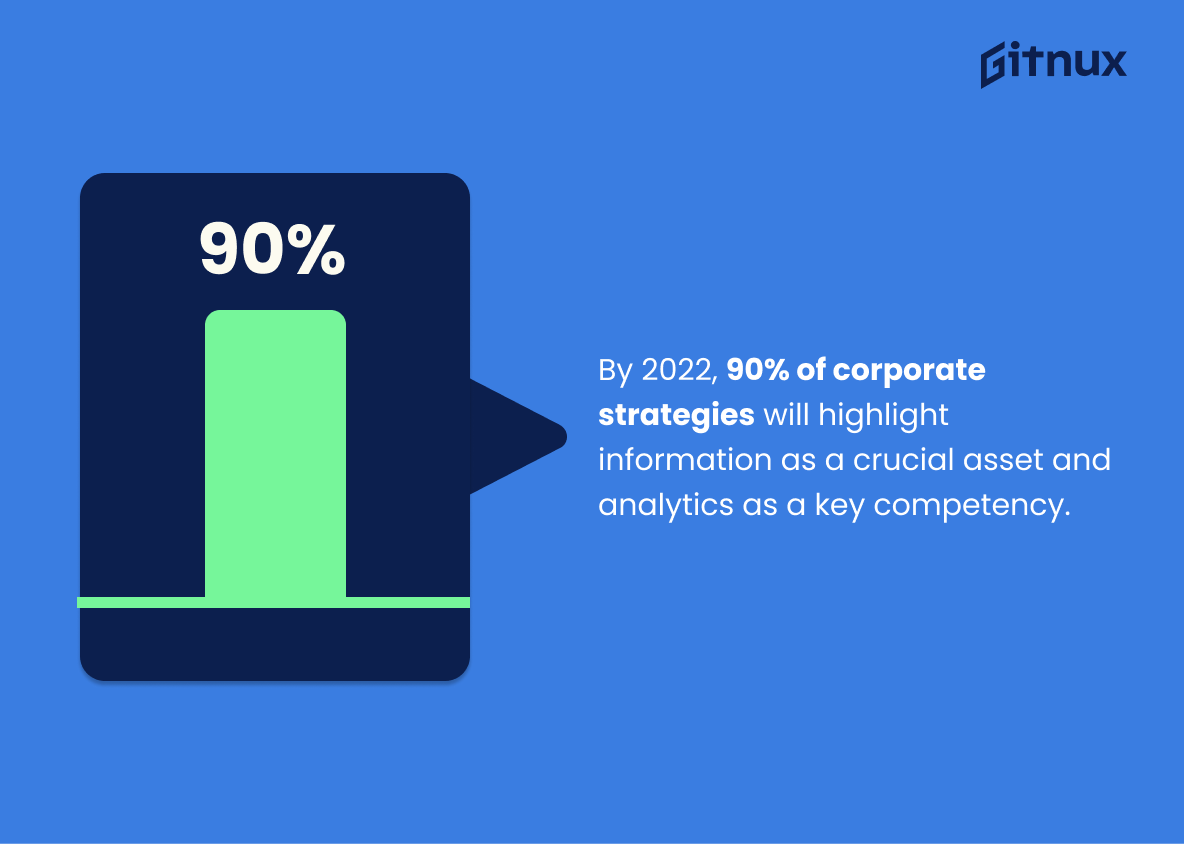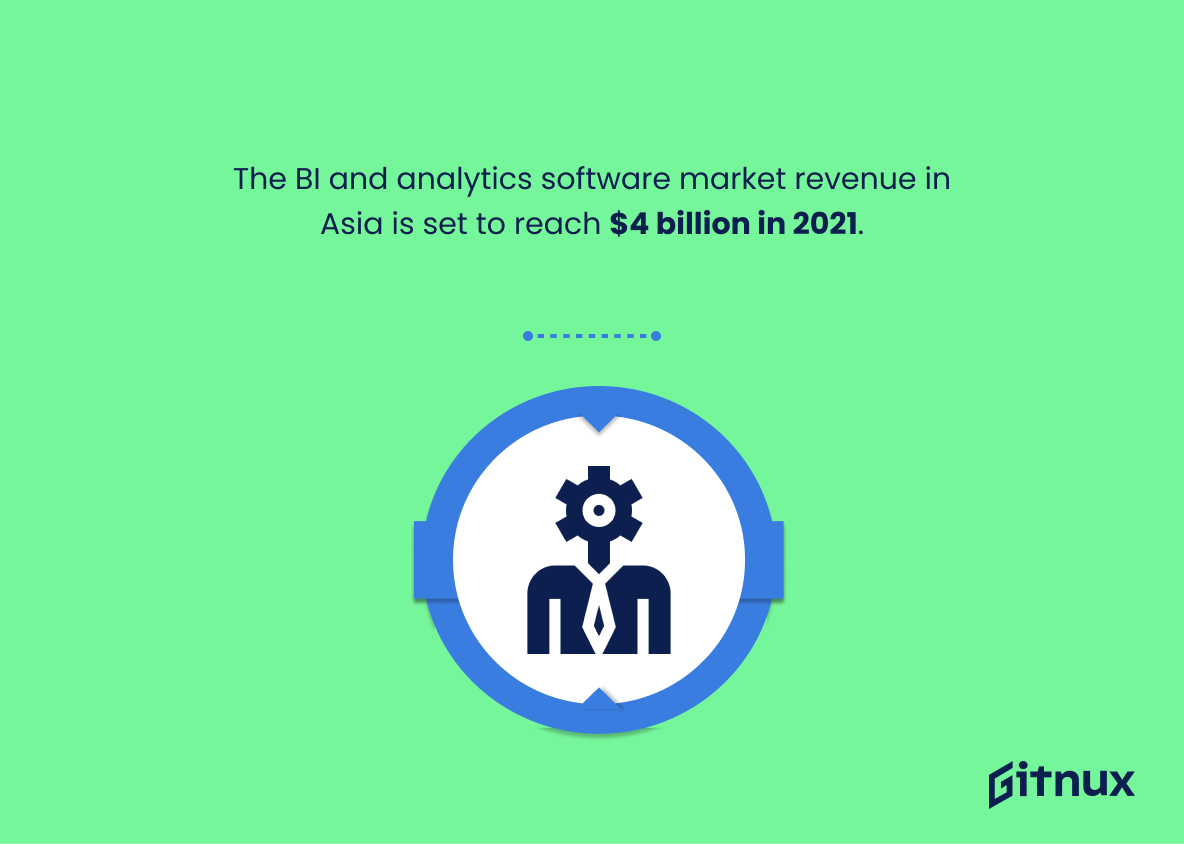In today’s digital era, data is the new currency that fuels business strategies and decisions. The Business Intelligence (BI) industry is at the forefront, leveraging data to create valuable insights. This blog post delves into the intriguing world of BI industry statistics. We’ll explore the latest trends, growth trajectories, market dynamics, and future potentials.
Whether you’re a seasoned business analyst, an aspiring data scientist, or a visionary entrepreneur, these statistics will give you an insightful glimpse into the vital role BI plays in shaping our modern business landscape. Stay with us as we decode its intricacies and unwrap the layers of this dynamic industry.
The Latest BI Industry Statistics Unveiled
The global market for Business Intelligence (BI) is projected to reach USD 33.3 Billion in 2025.
In the grand theater of business intelligence, the spotlight shines brightly on the enthralling data that puts the size of the global BI market at USD 33.3 Billion by 2025. It’s a crescendo that caps years of steady growth, promising a future performance that’s not to be missed. This meteoric rise not only points to BI’s transformative role in data-driven decision making, but it is also a testament to the widespread acceptance and adoption of BI tools across an array of industries.
Armed with this information, blog readers can appreciate the monumental shift towards a data-driven corporate world and the growing importance of investing in BI tools to stay relevant and competitive. There you have it – a fascinating scene that sets the stage in our ongoing narrative of BI industry statistics. The show is far from over, and the best, it seems, is yet to come.
The United States spent the most on BI and analytics software in 2020, with $15.3 billion.
Unveiling the treasure of big data through Business Intelligence (BI) and analytics, the United States has played the role of a trendsetter, mobilizing a stunning $15.3 billion in 2020. This colossal investment, crowning the US as the mammoth spender, underscores the significance and industry appetite for BI and analytics. In the tableau of BI Industry Statistics, this eye-opening figure exemplifies the degree to which businesses are investing in making data-driven decisions.
The hefty sum and its associated growth narrative demonstrate how integrative, predictive, and intuitive BI tools have become in enabling businesses to harness the power of data, a defining aspect of today’s competitive business environment. Hence, stakeholders can leverage this information to forecast trends, create groundbreaking strategies, and know exactly where we’re headed in the BI industry.
By 2022, around 80% of business people will spend their worktime viewing and analyzing data.
Crafting the future trajectory of any business venture requires a deep dive into the ocean of data. In a blog post that elucidates the BI (Business Intelligence) Industry Statistics, the projection that approximately 80% of business individuals will engage their work hours interpreting and scrutinizing data by 2022, anchors a significant viewpoint. It brings to the foreground the indispensability of data-driven decisions.
This forecast fortifies the escalating prominence of data in the modern business world. It suggests that data is no longer a supplementary instrument, but a guiding force in strategic planning, decision making, and business growth. This evolution underscores the expanding scope and need for BI tools, which enable efficient data consolidation, analysis, and visualization. The statistic, therefore, not only underlines a significant upcoming trend but also emphasizes the increasing market potential for BI systems, software, and related services.
In 2020, nearly one-third (32.14%) of BI software users resided in North America.
Unveiling the tapestry of BI industry statistics, the revelation that in 2020, nearly one-third (32.14%) of BI software users resided in North America ensconces a crucial perspective. It paints a vivid picture of the geographical spread and usage intensity of BI tools, casting North America as a dominant player on the global BI scene.
This prevalence unveils the region’s potential market for BI tools, uncovers adoption trends, and can aid BI companies in formulating strategic, market-centric policies. It also spotlights the demand for BI professionals in North America, providing a career forecasting tool for aspirants in this field. Hence, this piece of information is a cornerstone in understanding the dynamics and trends of the BI industry.
It’s estimated that poor data quality costs US businesses approximately $3.1 trillion annually.
Visualize this statistic as an inconceivably massive iceberg beneath the booming seas of US industry, threatening to capsize the proverbial ship of data-driven prosperity. This $3.1 trillion price tag of poor data quality illuminates the critical necessity for not just quality, but pristine data in the thriving Bi Industry.
The Bi Industry, driven by meticulous analyses and precision-based decisions, resembles a gourmet chef, who relies on the freshest and finest ingredients to create a culinary masterpiece. If substandard ingredients, or in this context, poor-quality data, creep into the recipe, the result can be a catastrophic loss in business value and market competitiveness. With an annual toll climbing into the trillions, it’s a gastronomic disaster no industry, certainly not the Bi Industry, can afford.
The very essence that makes the Bi Industry tick is the trust in the accuracy, reliability, and integrity of the data it curates and analyses. This statistic, a foreboding reminder of the consequences of lax data quality standards, underscores the urgency for businesses to invest in superior data management, cleansing, and verification tools, much like a chef sharpening their knives or sourcing premium ingredients.
In conclusion, remember that quality begets quality. The magnitude of these loses from poor data underpins why a data-driven industry like Bi, should go to great lengths ensuring their valuable decisions are based on quality data. It’s not just a number, it’s a clarion call to action for all those navigating the vast, data-infused ocean of the Bi Industry.
In 2017, over 50% of global enterprises considered investing in big data and BI as a high priority.
Illuminating the forward-thinking mindset of global enterprises, this notable piece of data manifests the escalating prominence of big data and Business Intelligence (BI) in the corporate landscape of 2017. It acts as a potent harbinger of the coming revolution in data-driven decision making. The statistic paints a compelling picture of an evoluntionary corporate climate where big data and BI weren’t merely optional complementaries, but in fact, pressing priorities for companies aiming to stay competitive.
It galvanizes the concept that globally acknowledged enterprises were not just acknowledging, but actively embracing the value of the BI industry in their investment agendas. Thus, embodying the evolving dynamics and surging demand within the BI industry.
More than 75% of large companies are investing in big data in industries including banking, life sciences, retail and insurance.
Delving into the landscape of business intelligence, one cannot overlook a pivotal highlight – over three-quarters of large corporations are channeling investments towards big data. This trend sweeps across industries, from banking to life sciences, retail, and insurance, transforming them into data-rich powerhouses.
The significance of this statistic in a BI Industry Statistics blog post shines brightly as it encapsulates the surge in big data adoption. In essence, it signals the increasing recognition of big data as a treasure trove of business value. Whether these corporations seek to drive revenue growth, reduce costs, or enhance risk management, their coinage on data resources unfolds the potential of BI tools in decoding business patterns and potential.
Moreover, as this statistic spans multiple industries, it signals a universal trend rather than an industry-specific one. Highlighting this universality deepens the richness of the BI industry narrative, illustrating its cross-industry impact. This statistic, therefore, frames the BI industry as a key player in guiding business decisions in our increasingly data-centric world.
Self-service BI is projected to grow at a CAGR of 14.1%, with a market forecast of $10.16 billion by 2023.
As we sail through the ocean of data, the winds of self-service Business Intelligence (BI) appear to be on our favor, with a promising Compound Annual Growth Rate (CAGR) of 14.1% propelling us towards a phenomenal market estimate of $10.16 billion by 2023. This meteoric rise paints a picture not just of an upcoming trend, but a fundamental shift in the BI industry dynamics.
In a digital age where data is currency, this trajectory of growth suggests that more businesses will be investing in self-service BI tools. Evidently, the concept of data democratization is gaining ground, providing insights not just to the IT maestros, but empowering all employees with critical decision-making capabilities.
Moreover, this expansion signifies enormous potential for developers and vendors in the BI industry. With a potentially multi-billion dollar pie to claim, the stakes are high, competition is severe, and innovation is paramount. As evolving technology fuels this race, protagonists in the BI saga stand ready to redefine dynamism.
Steady your binoculars, the landscape is about to undergo a revolutionary transformation. The discussion of this statistic in a blog post about BI Industry Statistics serves to underline the immense potential and transformative power of self-service BI in the modern data-centric business world.
90% of business leaders now believe that data and analytics are key to their organization’s digital transformation initiatives.
Delving into the digital depths of this statistic uncovers a colossal recognition by 90% of business moguls, shifting their focus towards data and analytics as the cornerstone of their digital transformation ventures. This powerful figure adds substance to a blog post about BI Industry statistics by acting as a litmus test to the vital role of Business Intelligence in navigating the fluid tides of modern business landscapes.
Interpreting this statistic on the broader canvas illuminates how massively the corporate world is capitalizing on data-driven decisions to spearhead digital transformation, ultimately mirroring the swelling importance of Business Intelligence and its indispensable place in the quiver of forward-thinking enterprises.
As of 2019, approximately 97.2% of enterprises are investing in big data and AI.
Underlining the thrilling surge of digital evolution, an astounding 97.2% of enterprises underscored their faith in the transformative power of big data and AI in 2019. This number gives resonance to the amplified importance of data and related technologies in driving decisions and strategies within organizations.
In the narrative of BI Industry statistics, this imagery becomes all the more vibrant. Not merely a number, it represents a paradigm shift in how businesses operate, magnifying the gravity of business intelligence in a data-driven landscape. The sheer behemoth of firms harnessing big data and artificial intelligence is a vibrant testament of BI’s growing dominance, drawing a clear sky projection for the BI industry’s growth trajectory. Ultimately, these statistics point us towards an inevitable reality – the future of business is intertwined with the evolution of BI, big data and AI.
Business intelligence software is projected to grow at a CAGR of 7.6% till 2026.
Reflecting on the dynamic landscape of the Business Intelligence (BI) industry, one number dramatically pops off the statistics page. The projection of BI software cultivating growth at a robust CAGR of 7.6% till 2026.
Let’s pause for a moment and imagine the implications of this growth. A flourishing CAGR of 7.6% represents an industry on the move, pulsating with constant innovation and increased adoption. It paints an exciting picture of a field that’s not just growing, but thriving.
Such growth also echoes the increasing need for businesses to harness data effectively. Businesses worldwide are witnessing an escalating need for intelligent software solutions that can make sense of vast data quantities, unearth hidden insights, and drive strategic decision-making.
Furthermore, this statistic implies an upsurge in opportunities and challenges within the BI industry, triggering various vibrant dialogues. Whether we’re discussing technology evolution, investment potential, or broader market impact, this statistic – the 7.6% projected growth of BI software till 2026 – will be at the epicentre of those conversations.
So, strap in and prepare for the ride; the BI industry isn’t just changing. it’s accelerating.
The global big data and business analytics market was valued at $193.14 billion in 2019.
This fascinating figure of $193.14 billion demonstrates the sheer potency of the global big data and business analytics market as of 2019. Within the context of a blog post about BI Industry Statistics, it becomes a testament to the increasing convergence of Business Intelligence (BI), big data, and business analytics.
This increasing fusion is driving momentous outcomes in the transformation of data into information, information into insights, and insights into savvy business strategies. This sumptuous market valuation underscores quite emphatically, the rising reliance and investment of firms worldwide in such technologies to gain competitive edge, make informed tactical choices and realize strategic ambitions in an increasingly data-driven world.
The global BI market is expected to grow at an annual rate of 8.4% between 2020 and 2027.
Highlighting growth expectations for the BI (Business Intelligence) market is like showing a barometer of opportunity for industries as a whole. The barometer is indicating a strong upward wind, with an anticipated 8.4% annual increase from 2020 to 2027. This not only underscores the substantial momentum in this sector, but it also draws a roadmap for entrepreneurs, businesses, or individuals considering an entrance into this field. Moreover, it hints towards an increasing dependence on BI tools for data analysis, forecasting, and decision-making, signaling the importance of gaining expertise in this area.
By 2022, 90% of corporate strategies will explicitly mention information as a critical enterprise asset and analytics as an essential competency.
Highlighting the prediction that 90% of corporate strategies will lean heavily on information and analytics by 2022 is of monumental importance when discussing BI Industry Statistics. This projection signals a sea-change in corporate thinking and strategic planning, underscoring the crucial role of Business Intelligence (BI) in the contemporary business landscape. It emphasizes the extent to which companies are starting to acknowledge the potency of analytics and information.
Consequently, this trend also implies that demand for BI and related competencies will surge significantly, creating a wealth of opportunities and challenges within the industry. The transformative power of this statistic cannot be understated in outlining the direction in which the BI industry is rapidly evolving.
The BI and analytics software market revenue in Asia is set to reach $4 billion in 2021.
Delving into the substantive value of the BI and analytics software market revenue reaching a significant $4 billion milestone in Asia signifies a potent surge in opportunity within the realm of data-driven decision making. As an emblem of a burgeoning landscape, this statistic plays a pivotal role in illustrating the increasing adoption of BI tools across diverse sectors.
The dramatic geometric growth underscores the growing dependency on analytics software in unlocking potential business insights, making it a sparkling highlight of any blog post enlightening the public about BI industry statistics. It ignites curiosity among readers about the source of such growth – a cue into the vitality and crucial role of BI in today’s digital economies. It acts as a beacon, indicating the lucrative market and the potential for immense commercial success for BI stakeholders.
By 2023, worldwide spending on AI systems will reach $57.6 billion.
In the grand landscape of the Business Intelligence (BI) realm, our world teeters on the brink of a revolution fueled by Artificial Intelligence. Pioneers and investors all across the globe are prepping their war chest for the AI surge, aiming to toss over $57.6 billion into its development by 2023.
Such a monumental financial commitment serves as an undeniable marker of the seismic impact AI is anticipated to have on BI. From streamlining operations to driving data-driven decisions, AI’s integration within BI frameworks will dramatically alter business landscapes, making success synonymous with adaptability to this transformative innovation.
The global data visualization market size was valued at $8.85 billion in 2019.
Delving into the landscape of the Business Intelligence (BI) industry, one cannot undermine the hefty impact of the data visualization market’s whopping value at $8.85 billion in 2019. This transcendent figure illuminates the trajectory of data interpretation, underscoring its significance in the realm of BI.
The robust market size mirrors the economy’s heartbeat, where businesses pivot to data visualization tools for navigating complex data streams, catalyzing strategic decisions and unearthing invaluable insights. This echoes the loom of a datapocalypse, where information is king, making this multibillion-sized arena an irresistible gravitational force within the BI cosmos.
As of 2020, 78% of small businesses will be fully adapted to cloud computing, a key component of modern BI.
Delving into the realm of BI Industry Statistics, one cannot overlook the compelling narrative painted by the statistic: ‘As of 2020, 78% of small businesses will be fully adapted to cloud computing, a key component of modern BI.’
This statistic sheds light on the rapid integration of cloud computing into the operations of small businesses, a telling testimony of its indispensability in today’s competitive business environment. As cloud computing constitutes a critical element of modern Business Intelligence (BI), its adoption showcases a shift towards data-driven insights to steer decision-making processes.
Moreover, witnessing a significant 78% of small businesses adapt to this technology accentuates the democratization of sophisticated BI tools. It subtly underscores how these formerly ‘big players only’ tools are becoming accessible and effective for businesses irrespective of their size.
Therefore, this significant trend decked out in statistics, uncovers the bridge being built between small businesses and larger corporations, showing that they’re all playing in the same technological ballpark. This broad acceptance also serves to predict a surge for services and products that support or complement cloud-based BI solutions, drawing a roadmap for future developments within the BI industry.
Conclusion
The Business Intelligence (BI) industry presents a fast-changing landscape, teeming with opportunities and challenges. Statistics indicate its monumental growth and its increasing significance in driving data-powered decisions. It’s clear that BI tools are no longer a luxury, but rather a necessity for businesses aiming for growth.
As advancements continue to unfold, professionals should not only embrace this technological evolution, but also strive to understand it. Undoubtedly, BI is a force to reckon with, promising compelling transformations in the future business scape. It’s an exciting era for BI, and staying informed about industry statistics is crucial for optimal business performance.
References
0. – https://www.www.fortunebusinessinsights.com
1. – https://www.www.infogix.com
2. – https://www.www.marketsandmarkets.com
3. – https://www.www.financesonline.com
4. – https://www.www.statista.com
5. – https://www.financesonline.com
6. – https://www.www.grandviewresearch.com
7. – https://www.www.smallbizgenius.net
8. – https://www.www.globenewswire.com
9. – https://www.www.gartner.com
10. – https://www.www.dnb.co.uk
11. – https://www.www.idc.com
12. – https://www.towardsdatascience.com
13. – https://www.www.microstrategy.com
